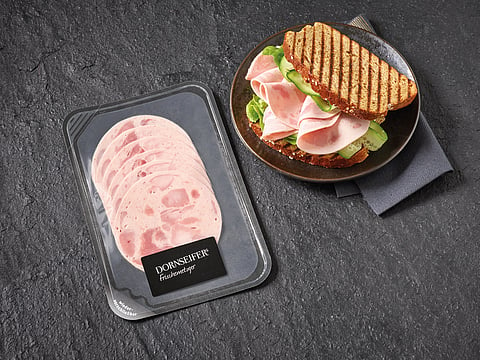
- Home
- EventsEvents
- Product Launches
- CategoriesCategories
- Advertise
- Opinion

SEALPAC, the global packaging expert, is not only well known for its state-of-the-art packaging equipment, but also as a leading developer of innovative, resource-saving packaging concepts. These solutions, often created in joint cooperation ith partner companies, can be produced reliably and highly efficiently on its full range of traysealers, from the semi-automatic M-Flex to the fully automated Amax-series. All machines combine optimal product safety with an economical use of consumables. This supports food manufacturers around the world in launching sustainable packaging at retail. Here are some recent examples from Europe.
EasyLid: material-saving, reclosable tray
A Dutch producer of dairy products has recently brought an eye-catching packaging solution to the retail shelves. It uses SEALPAC’s EasyLid concept for butter sold under private label at one of the country's largest retailers. The EasyLid solution combines a patented, injection-moulded, polypropylene (PP) tray, produced by Naber Plastics in The Netherlands, with a unique tray-sealing technology from SEALPAC. The tray has a common sealing edge, as well as an additional ring. A peelable seal is applied to the regular sealing edge, whereas the additional ring is hermetically sealed in the same process. As such, upon opening the tray for the first time, the lid functionality is automatically activated. It means that the additional snap-on lid, common for this type of packaging, is no longer required. Also, there is no need to invest in a lidding system that requires extra space and more personnel in the factory.
The EasyLid trays are made of 100% PP, making them fully recyclable after use. At the same time, the packaging concept contributes to more resource conservation by reducing plastic waste, which has led to various international packaging awards. By switching to EasyLid, the Dutch manufacturer achieved a 35% reduction in the weight of its packaging compared to the previously used solution with a tray, top film, and lid.
FlatMap: sustainable, modified atmosphere packaging of sliced products
The FlatMap packaging concept, used by a renowned German manufacturer of cold cuts, puts sliced meat, dairy and seafood products in the spotlights. These products are placed on a flat cardboard carrier made from bleached or unbleached fibre. The carrier is coated with a thin protective layer, which provides stability, as well as a reliable barrier against fat, moisture, and oxygen. The products are securely sealed under modified atmosphere by means of a thin lidding film, hence prolonging their shelf life. Both the protective layer and lidding film are polyolefin-based, making them fully recyclable.
Consumer-friendly opening of the pack is ensured by an easy-to-grip peel tab. Due to the perfectly flat design of the pack, an entirely new level of reclosability can be achieved. This ensures optimal freshness until the very last slice and enables first-class storage in the consumer’s refrigerator without the need for re-packing.
eTray: minimized plastic content for fresh food products in trays SEALPAC’s innovative eTray concept, which allows for efficient packaging of fresh food products under modified atmosphere with as little plastic as possible, is used by a renowned German customer in the fresh meat segment for goulash, pork schnitzels, and meat skewers. The tray consists of two components: a high-quality cardboard base, which can be printed on both sides, and a plastic inner layer that purely provides the sealing and barrier function. Owing to the highly stable, uninterrupted sealing edge, each tray is reliably sealed under MAP on any of SEALPAC’s traysealers. The extremely stable eTray is suitable for denesting and allows for smooth transport across the packaging line. Compared to common trays in the market, between 40% and 60% of plastic is saved, depending on shape and size.
Click HERE to subscribe to our FREE Weekly Newsletter
